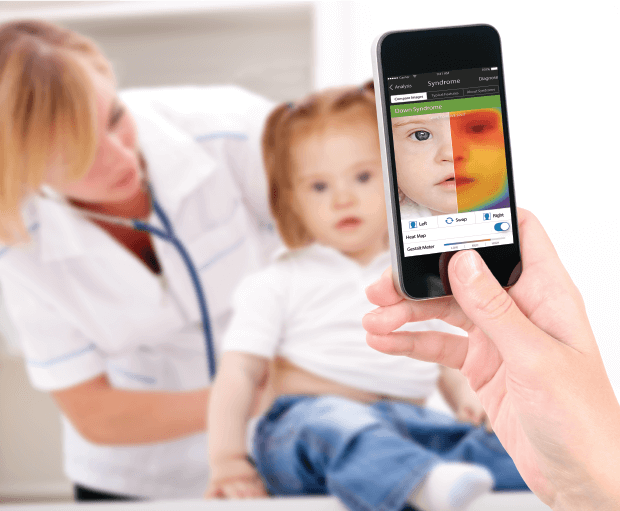Diagnóstico Genético ehlers-danlos syndrome
Diagnóstico genético pour Ehlers-Danlos syndrome
Qu'est-ce qu'Ehlers-Danlos syndrome?
C'est une maladie rare du tissu conjonctif. Il existe plusieurs types principaux de syndrome, chacun variant dans sa gravité et sa cause.
Type EDS Classique/Musculocontractural 1 et Type 2
This is not the most common form of the syndrome. It is slightly more severe than the most common form of this rare disease, as it presents with additional symptoms, including fragile and stretchy skin, and possible heart issues. This form of the syndrome is caused by mutations in the CHSTI4 gene.
Type d'hypermobilité EDS 3
C'est la forme la plus courante de syndrome, le principal symptômes dont des douleurs articulaires constantes et des articulations très flexibles ou hypermobiles. Le gène précis responsable de ce type de syndrome doit encore être identifié.
This is the rarest form of the syndrome. It is also the most severe form. Its symptoms are more severe and include a higher risk of organ rupture and damage, and torn blood vessels. It is caused by mutations in the COL3A1 gene.
The fact that there are three possible forms of the syndrome, each with their own cause and additional symptoms, can make genetic diagnosis for Ehlers Danlos syndrome, difficult in general.
Symptômes
Symptômes du syndrome sont généralement identifiés pendant l'enfance et peuvent inclure l'un des éléments suivants :
- Marche retardée accompagnée d'hypermobilité articulaire (articulations très flexibles)
- Ecchymoses et saignements anormaux (ecchymoses plus graves que la normale, ecchymoses fréquentes)
- Rupture de vaisseau inexpliquée
- Peau fragile, y compris des cicatrices évidentes
- Hyper flexibilité des articulations, y compris un risque accru de luxations articulaires
- Rupture d'organe creux (dans les cas plus graves)
- Unique Ehlers-Danlos facial features– a thick build, thin lips and a small mouth, clubfoot, low muscle tone.
Diagnóstico genético pour Ehlers-Danlos syndrome
Diagnosing Ehlers Danlos syndrome may involve Test génétique. This will attempt to identify, by analyzing a sample of an individual’s blood, the precise gene mutation responsible for causing the different types of the syndrome.
Cependant, comme la forme la plus courante de la syndrome, Type 3, n'a pas encore de gène identifié connu pour le provoquer, et donc les tests génétiques ne peuvent pas nécessairement être invoqués pour fournir un résultat et un diagnostic précis.
Diagnóstico Genético and testing for Ehlers Danlos syndrome will differ according to the type of syndrome suspected.
EDS Type 1 and 2: genetic testing for these types of the syndrome will generally involve a blood test to identify the CHSTI4 gene responsible for causing it. However it is known that this testing only discovers around 50% of all cases. This means diagnosis rests on the expertise and experience of a geneticist and genetic counselor responsible for the diagnosis process.
EDS Type 3: there is currently no genetic testing available for this form of the condition. This is because the gene mutation is as yet unknown. A diagnosis will rely on an understanding of the symptoms involved, and the physical and medical health of an individual.
EDS Type 6: for this rare form of the syndrome, genetic testing is available in order to identify the COL3A1 gene mutation, which causes it.
diagnostic erroné
Genetic diagnosis for Ehlers-Danlos is fraught with challenges. Ehlers-Danlos misdiagnosis is high, with up to 56% of patients being misdiagnosed on their way to an ED diagnosis.
Cela est dû en partie à un manque persistant de compréhension des causes de la syndrome, ce qui crée à son tour une situation où la plupart des types de syndrome peut être diagnostiqué sur la base d'un seul examen physique. Ça signifie diagnóstico genético pour les racistes d'Ehlers Danlos dans l'expertise des personnes impliquées dans le diagnostic.
Conseil Ginitique
Genetic counseling is an important part of the genetic diagnosis process for all rare diseases. When faced with a possible diagnosis of Ehlers-Danlos syndrome, Conseil Ginitique is important for the following reasons:
- Il soutiendra émotionnellement les patients atteints de maladies rares et leurs familles tout au long du processus de test.
- It will understand the difficulties involved in diagnosis of this rare disease, including the high rate of misdiagnosis and lack of accuracy. Access to quality and consistent genetic counseling services, helps reduce the rate of misdiagnosis across all rare diseases, and is especially important in the diagnosis of Ehlers-Danlos, where accurate Ehlers-Danlos genetic testing methods are missing.
- Il expliquera le symptômes du syndrome, y compris des recommandations pour une intervention et un traitement précoces, et les comprendre afin d'assurer un diagnostic plus précis.
- Il aidera à coordonner le personnel médical et les professionnels impliqués dans les soins de longue durée d'une personne atteinte d'Ehlers-Danlos syndrome.
UNE diagnóstico genético d'Ehlers Danlos syndrome changera la vie de nombreuses familles. Recevoir un diagnostic précis est une première étape importante, afin de s'assurer que la gestion à vie de la syndrome assure les meilleurs soins pour la personne diagnostiquée.
Plus nous comprendrons comment Ehlers Danlos peut être diagnostiqué et comment les patients atteints de maladies rares peuvent être pris en charge à la fois pendant et après leur parcours diagnostique, meilleurs seront les résultats des soins à long terme.







